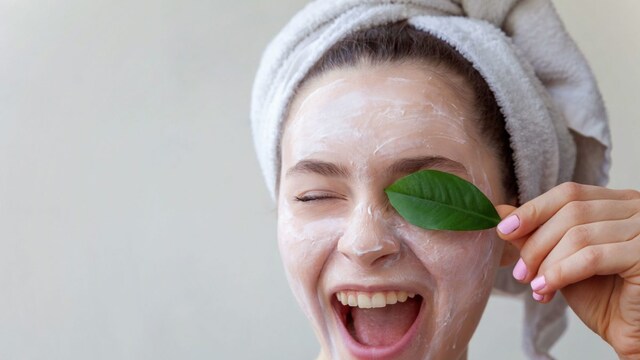Over the past decade, the beauty industry has undergone a significant transformation, with a rising shift towards cleaner, more sustainable, and health-conscious products. The movement toward clean beauty has taken the spotlight, reshaping how consumers view beauty and skincare products. As concerns about harmful chemicals and their effects on health and the environment have become more prominent, consumers are increasingly seeking safer, more transparent alternatives. This growing demand for clean beauty reflects a broader societal shift towards health and well-being.
In this article, we will explore the factors driving the rise of clean beauty, examine the key benefits of clean beauty products, and analyze why they are becoming an essential part of modern beauty routines. We will also delve into the challenges and controversies surrounding clean beauty and offer insights into how consumers can make informed choices.
What is Clean Beauty?
Before exploring why clean beauty is gaining popularity, it’s essential to understand what the term means. Clean beauty refers to cosmetics and skincare products formulated without harmful ingredients, such as synthetic chemicals, parabens, sulfates, and phthalates, that are potentially harmful to human health or the environment. Clean beauty is centered around transparency, integrity, and sustainability.
A clean beauty product is typically characterized by:
- Non-toxic ingredients: The product avoids harmful chemicals that could potentially irritate the skin or lead to long-term health issues.
- Transparency: Clean beauty brands are open about the ingredients they use and where their products come from, often opting for natural and plant-based ingredients.
- Sustainability: Many clean beauty brands are committed to eco-friendly practices, such as using recyclable packaging, cruelty-free testing methods, and eco-conscious manufacturing processes.
Factors Driving the Popularity of Clean Beauty
Several factors are contributing to the rapid rise of clean beauty, reshaping the beauty industry’s landscape. These factors include increased consumer awareness, demand for transparency, growing health concerns, and the desire for more ethical and sustainable practices in the beauty space.
1. Increased Awareness of Toxic Ingredients
One of the key drivers of the clean beauty movement is the growing awareness of harmful chemicals present in many traditional beauty products. Consumers are more informed than ever before about the potential risks associated with synthetic ingredients commonly found in skincare and makeup. Research linking certain chemicals to health issues, such as hormone disruption, skin irritation, and long-term diseases like cancer, has prompted many to rethink the products they use on their skin.
For instance, ingredients like parabens, phthalates, sulfates, and synthetic fragrances have been shown to have potentially harmful effects, leading to a rise in demand for safer alternatives. This awareness has fueled the demand for clean beauty products that are free from such ingredients, offering consumers peace of mind when choosing products for their skincare and beauty routines.
2. Demand for Transparency
In today’s age of information, consumers are more discerning about the products they purchase and are increasingly seeking brands that prioritize transparency. Clean beauty brands are built around the idea of openness—sharing not only the benefits of their products but also the full list of ingredients used and their sourcing practices.
Transparency has become a significant selling point for consumers, as they seek brands that are honest about what goes into their products. The power of social media has also played a role in this shift, with influencers, bloggers, and beauty enthusiasts sharing their personal experiences with products, advocating for cleaner, safer options. This level of openness has led to a shift in consumer behavior, as more people want to feel confident about the products they are applying to their skin.
3. Health Consciousness
As people become more conscious about their health and wellness, there has been a noticeable shift in how they approach beauty products. Many consumers are now looking for products that align with their overall well-being, which includes using natural, chemical-free products that won’t compromise their health. This change in mindset has led to an increased interest in clean beauty as a way to support healthier lifestyles.
With an increasing number of people turning to healthier eating habits and exercise routines, it makes sense that skincare and beauty products would follow suit. Clean beauty is seen as a natural extension of this health-conscious movement, providing consumers with safer options that align with their wellness goals.
4. Sustainability and Ethical Practices
Sustainability is another critical factor driving the clean beauty movement. Modern consumers are highly aware of the environmental impact of their purchasing decisions. Many are seeking products that align with their values, such as eco-friendly packaging, cruelty-free testing, and ethical sourcing of ingredients. Clean beauty brands are addressing these concerns by adopting sustainable practices and using renewable, biodegradable ingredients.
In addition to sustainability, ethical practices play a major role in the clean beauty movement. Consumers are increasingly looking for beauty brands that are cruelty-free, vegan, and committed to fair labor practices. These brands are often seen as not only more responsible but also more aligned with consumer values, which makes them increasingly popular.
5. Rise of Minimalism
The trend of minimalism has also contributed to the rise of clean beauty. Consumers are embracing the idea of simplifying their lives, including their beauty routines. They are opting for fewer products that serve multiple functions and are formulated with safe, effective ingredients. Clean beauty products often emphasize simplicity, with fewer ingredients and a focus on quality over quantity.
This minimalist mindset is leading people to choose products that are versatile, free from unnecessary chemicals, and that serve multiple purposes, such as multi-use oils or balms. With fewer products needed, consumers can embrace the idea of “less is more,” contributing to the demand for clean beauty products.
The Benefits of Clean Beauty
The growing popularity of clean beauty can be attributed to several key benefits that these products offer to consumers. Below, we’ll look at some of the reasons why clean beauty products are not only good for the body but also beneficial for the environment and society.
1. Safer for Skin Health
One of the main reasons people are turning to clean beauty is that these products are safer for skin health. Traditional beauty products often contain harsh chemicals that can irritate the skin, leading to rashes, dryness, acne, and other conditions. Clean beauty products are formulated with gentle, non-toxic ingredients that are less likely to cause harm or irritation, making them ideal for sensitive skin.
2. Environmentally Friendly
Clean beauty products tend to have a lower environmental impact due to the sustainable sourcing of ingredients and eco-friendly packaging. Many clean beauty brands use recyclable or biodegradable packaging, reducing waste and helping to protect the environment. By opting for natural and organic ingredients, these products also have a reduced environmental footprint compared to those made with synthetic chemicals that can be harmful to ecosystems.
3. Cruelty-Free and Vegan
Many clean beauty brands are committed to being cruelty-free, meaning they do not test their products on animals. Some also offer vegan options, ensuring that the ingredients used do not come from animal sources. This ethical approach resonates with a growing number of consumers who are concerned about animal welfare and are choosing products that align with their values.
4. Long-Term Skin Benefits
Because clean beauty products are formulated with high-quality, nourishing ingredients, they often offer long-term benefits for the skin. Natural ingredients like antioxidants, essential oils, and plant extracts can help hydrate, rejuvenate, and protect the skin over time. This results in healthier, more vibrant skin, without the use of potentially harmful chemicals or additives.
Challenges and Controversies in Clean Beauty
While clean beauty is undoubtedly a growing trend, the movement is not without its challenges and controversies. Some of the challenges include:
1. Lack of Regulation
One of the significant issues with the clean beauty movement is the lack of universal standards or definitions. Unlike organic or natural labels, “clean beauty” is not regulated, meaning that there is no consistent set of criteria for what can be labeled as “clean.” This can lead to confusion among consumers and even the risk of greenwashing, where brands falsely claim to be clean without meeting the necessary standards.
2. Higher Costs
Clean beauty products can often be more expensive than their traditional counterparts due to the use of premium, ethically sourced ingredients and sustainable production methods. While these products may offer benefits for both health and the environment, their higher price tags can deter some consumers from making the switch.
3. Effectiveness
Some critics argue that clean beauty products may not always be as effective as traditional beauty products, particularly in cases where natural ingredients are used in place of synthetic ones. While many clean beauty products deliver excellent results, the effectiveness of some products can vary depending on the formulation and the consumer’s individual skin type.
FAQs About Clean Beauty
- What does “clean beauty” mean? Clean beauty refers to beauty products formulated without harmful or toxic ingredients, such as parabens, sulfates, and phthalates. These products focus on natural, plant-based, and safe ingredients.
- Why is clean beauty so popular? Clean beauty is popular due to growing consumer awareness about the potential harm of synthetic chemicals, a desire for safer and more ethical products, and the increasing demand for transparency and sustainability in the beauty industry.
- Is clean beauty always natural? While many clean beauty products are natural, the term “clean” focuses more on avoiding harmful ingredients. Some clean beauty products may contain synthetic ingredients if they are proven to be safe and effective.
- Are clean beauty products better for your skin? Clean beauty products are often formulated with gentle, non-toxic ingredients that can be less irritating and more nourishing for the skin. However, the effectiveness varies from product to product.
- Are clean beauty products more expensive? Clean beauty products can be more expensive due to the use of high-quality, sustainably sourced ingredients and ethical production practices. However, as demand grows, prices may become more competitive.
- What are some common ingredients avoided in clean beauty products? Common ingredients avoided in clean beauty products include parabens, phthalates, sulfates, synthetic fragrances, and certain preservatives.
- How do I know if a product is truly “clean”? Look for brands that offer transparency in their ingredient lists and sourcing practices. You can also check for certifications, such as cruelty-free or vegan labels, to ensure ethical and safe production methods.
Conclusion
Clean beauty is not just a passing trend—it is a significant shift in how we approach beauty and skincare. Driven by consumer demand for safer, more transparent, and ethical products, clean beauty is reshaping the beauty industry. With benefits ranging from healthier skin to a reduced environmental footprint, clean beauty offers consumers a more responsible and sustainable alternative to traditional beauty products.
Despite the challenges, including a lack of regulation and higher costs, the clean beauty movement is here to stay. As consumers continue to demand safer and more effective products, the clean beauty industry will likely continue to thrive, pushing for greater innovation, transparency, and sustainability in the beauty sector.
Key Takeaways
- Clean beauty refers to products formulated without harmful chemicals, emphasizing natural, safe, and effective ingredients.
- The movement is driven by consumer awareness, a desire for healthier skin, and the demand for transparency and sustainability.
- Clean beauty offers benefits like safer skin health, eco-friendly practices, and cruelty-free products.
- While challenges such as lack of regulation and higher costs exist, the clean beauty movement is rapidly growing and evolving.
- By embracing clean beauty, consumers can contribute to healthier personal care routines and a more sustainable future for the beauty industry.

